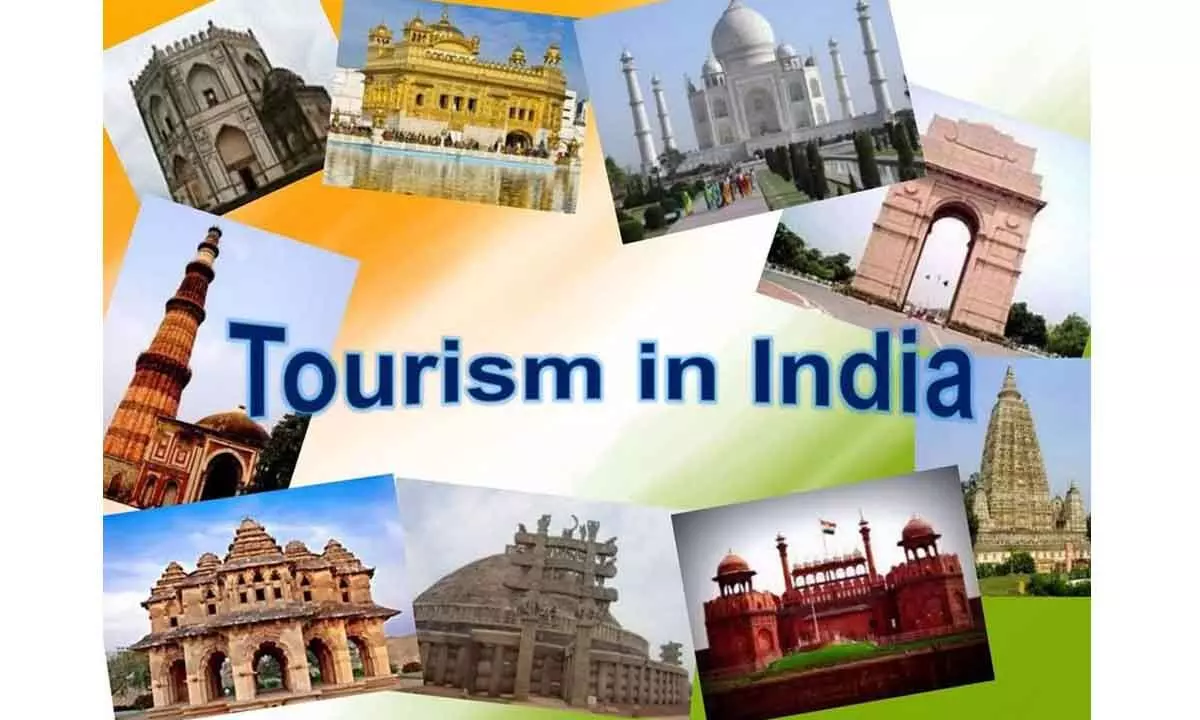One notable trend in the Indian travel and tourism market is the rise of digital platforms and online booking services, making travel more accessible and convenient for consumers
The travel and tourism market in India is expected to generate revenue of $23.72bn in 2024 according to Statista. The projected annual growth rate (CAGR 2024-2028) of 9.62% is expected to result in a market volume of $34.25bn by 2028. The largest market in India is the Package Holidays market, which is expected to reach a market volume of US$10.48bn in 2024. By 2028, the number of users in the Package Holidays market is expected to amount to 64.74m users. In 2024, user penetration is expected to be 7.8%, which is expected to increase to 10.0% by 2028. The average revenue per user (ARPU) is expected to be US$209.70. By 2028, online sales are expected to generate 60% of the total revenue in the Travel & Tourism market in India. In comparison to other countries, the United States is expected to generate the highest revenue of US$199bn in 2024. India’s tourism industry is currently focusing on promoting sustainable and eco-friendly travel options to attract responsible and conscious travellers.
India’s travel and tourism sector will experience significant growth, with an estimated addition of 5.82 crore jobs by 2033. Despite the challenges presented by the pandemic, the sector remained resilient and accounted for 39 million jobs in 2020, constituting 8% of the total workforce in the country. Following the pandemic recovery, the sector experienced a swift resurgence, with talent demand in tourism surging by 44% in August 2023 alone. It is expected that 1.6 million jobs will be added in the same year.
Travel and tourism significantly contribute to India’s economy, generating INR 15.9 lakh crore in 2022, with an estimated contribution of INR 16.5 lakh crore in 2023. The top states that attract domestic tourists are Uttar Pradesh, Tamil Nadu, Andhra Pradesh, Karnataka, and Maharashtra. At the same time, cities like Delhi NCR, Mumbai, Bengaluru and Pune have witnessed a surge in hiring. The sector’s transformation is evident, with emerging subsets such as destination wedding travel, religious tourism, adventure sports tourism, ecotourism, cultural tourism, and rural tourism gaining traction. Sustainable tourism, valued at US$ 180 billion globally, has also seen significant adoption.
The travel and tourism sector has created key job profiles that have experienced year-on-year surges, including sales, business development, chefs, travel consultants, tour operators, travel agents, hoteliers, guides, wildlife experts, and transportation providers.
Companies are increasingly adopting the gig model to address talent shortages, with a 14% increase in gig roles within the travel and tourism sector since January 2023. Positions such as translators, photographers, and tour guides are expected to grow further, with an anticipated 18-20% increase in the next two years.
India’s travel and tourism market has been experiencing significant growth in recent years, attracting both domestic and international travellers.
Travellers in India are increasingly seeking unique and authentic experiences, driving the demand for off-the-beaten-path destinations and cultural immersion. Additionally, there is a growing preference for sustainable and eco-friendly travel options among Indian tourists.
One notable trend in the Indian travel and tourism market is the rise of digital platforms and online booking services, making travel more accessible and convenient for consumers. Another trend is the increasing popularity of adventure tourism and wellness retreats, catering to the evolving preferences of travellers.
Local special circumstances: India’s diverse cultural heritage, rich history, and scenic landscapes make it a popular destination for both domestic and international tourists. The country’s vibrant festivals, bustling markets, and mouth-watering cuisine also contribute to its appeal as a travel destination.
The growing middle class in India, coupled with rising disposable incomes, has fuelled the demand for travel and tourism services. Government initiatives to promote tourism, improve infrastructure, and simplify visa processes have also played a crucial role in driving the growth of the industry. Additionally, the increasing connectivity through air, road, and rail networks has made travel within India more convenient and affordable for travellers.
The contribution of travel and tourism industry in the world GDP stands at about 10.4% and in most nations with advanced travel & tourism, this industry contributes more than 13% to their respective GDPs. According to the World Travel & Tourism Council, India is also on a high growth trajectory projected to grow by an estimated CAGR of 7.1% in terms of GDP contribution over next decade.










